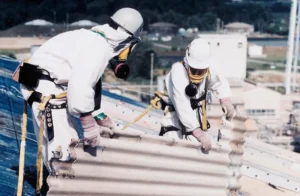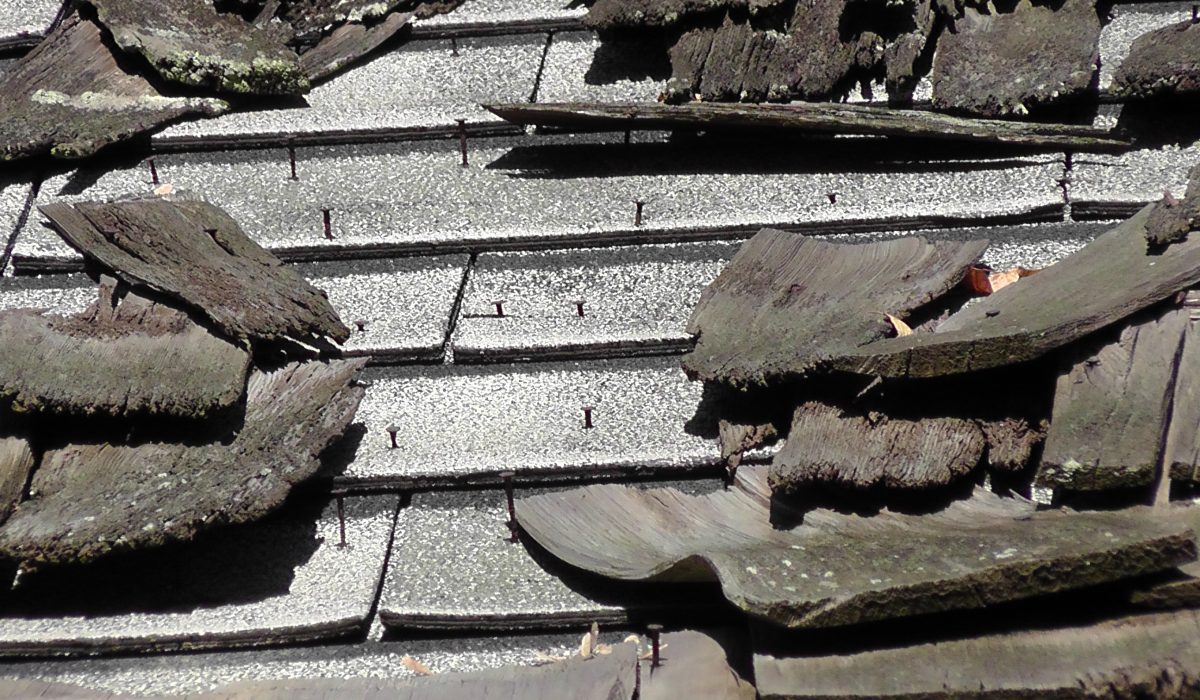- By Sydni
- Construction Blog
- 0 Comment
What is Asbestos and Why is it Bad for Homeowners?
Asbestos. It’s a word that tends to send shivers down the spine of homeowners, and for good reason. While asbestos was once hailed as a miracle material for its durability and heat resistance, we now know it poses significant health risks. But what exactly is asbestos, why is it dangerous, and why should homeowners be concerned about it in their homes?
 1. What is Asbestos? [Pronunciation: “as-BES-tos”]
1. What is Asbestos? [Pronunciation: “as-BES-tos”]
Asbestos is a group of naturally occurring minerals that were widely used in construction materials throughout the 20th century. These minerals are made up of fine, durable fibers that are resistant to heat, fire, and chemicals. Because of these properties, asbestos was commonly used in products like insulation, roofing shingles, floor tiles, cement, and even in some types of paint.
However, the very qualities that made asbestos so popular in construction also make it dangerous. When asbestos-containing materials are disturbed, they release tiny fibers into the air. If these fibers are inhaled, they can lodge in the lungs and lead to serious health problems over time.
2. Why is Asbestos Bad for Homeowners?
Health Risks:
The primary reason asbestos is bad news is because of the health risks it poses. When asbestos fibers are inhaled, they can cause a range of serious respiratory illnesses, including:
- Asbestosis: A chronic lung disease that leads to scarring of lung tissue, causing shortness of breath and increasing the risk of other lung conditions.
- Lung Cancer: Asbestos exposure is a significant risk factor for lung cancer, especially for those who smoke.
- Mesothelioma: A rare and aggressive cancer that affects the lining of the lungs, abdomen, or heart, almost exclusively caused by asbestos exposure.
These conditions often don’t appear until many years after the initial exposure, making asbestos particularly insidious.
Presence in Older Homes:

If your home was built before the 1980s, there’s a chance it may contain asbestos. It was used in many construction materials, so it could be lurking in places you wouldn’t expect, like insulation, siding, roofing shingles, or even the textured coatings on ceilings and walls.
Disturbance Equals Danger:
Asbestos-containing materials are generally safe if they’re in good condition and left undisturbed. However, once these materials start to deteriorate or are damaged during renovations, they can release asbestos fibers into the air. This is why it’s critical to have your home inspected if you suspect asbestos might be present.
3. How to Say “Asbestos” and Why Pronunciation Matters:
Understanding asbestos starts with knowing how to pronounce it correctly: “as-BES-tos.” While it might seem like a small detail, knowing how to say the word can make conversations with contractors, inspectors, and healthcare professionals clearer and more confident. After all, the better you can communicate about a potential problem, the better equipped you’ll be to address it.
4. The Importance of Inspections:
 Protecting Your Health:
Protecting Your Health:
Given the serious health risks associated with asbestos, it’s crucial to have a professional inspection if you suspect asbestos may be present in your home. This is especially important before starting any renovation projects that could disturb asbestos-containing materials.
What Happens During an Asbestos Inspection:
A certified asbestos inspector will take samples of materials in your home that are likely to contain asbestos. These samples are then analyzed in a lab to confirm the presence of asbestos. If asbestos is found, the inspector will recommend a course of action, which may include encapsulation (sealing the asbestos so it doesn’t release fibers) or removal by a licensed abatement professional.
When to Get an Inspection:
- Before Buying or Selling a Home: If you’re purchasing an older home or selling one, an asbestos inspection can provide peace of mind and avoid surprises during the closing process.
- Before Renovations: If you’re planning to remodel, it’s essential to check for asbestos, especially in areas like attics, basements, and exterior siding.
- If You Notice Damage: If you see any signs of damage to older materials that might contain asbestos, such as crumbling insulation or cracking tiles, it’s time to call in a professional.
Asbestos might be a relic of the past, but its dangers are very much present today. Understanding what asbestos is, why it’s harmful, and the importance of regular inspections can help you protect your home and your health. If you suspect that your home may contain asbestos, don’t wait—reach out to a professional for an inspection. At Insured Roofs, we’re here to help you navigate these concerns with expert advice and top-notch services. Your safety is our priority, so let’s work together to ensure your home is asbestos-free and secure for years to come.

